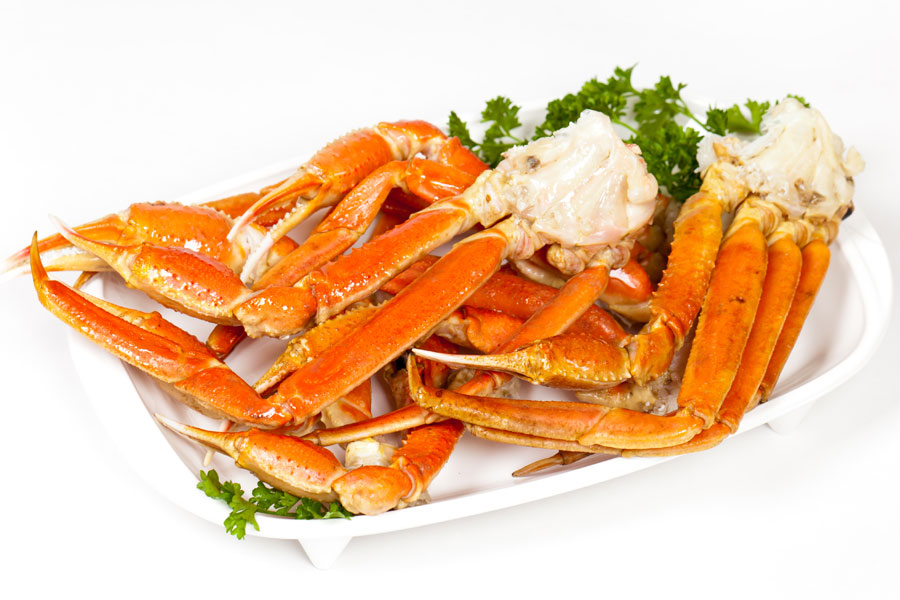Background
The most commonly caught and sold species is the red king crab (Paralithodes camtschaticus). According to the Alaska Seafood Marketing Institute, the best meat of the king crab is in the legs. Unlike other crabs, king crabs have only six legs (versus eight). The body of the crab offers little meat and usually goes to canners. King crabs were plentiful until the early 1980s. Then came a shortage caused by water temperature changes and other environmental conditions. Since then, the price has more than doubled and they are less available.
Nutrition Basics
An Alaskan king crab leg (134g) cooked and served plain, provides 130 calories, 2.1g of fat, .2g of saturated fat, and zero trans fat, carbohydrate, sugar and dietary fiber. One leg of the aforementioned serving size provides about 26g of protein, making it an excellent source of protein, though it is much leaner than the same amount of beef. Although king crab is a source of cholesterol, containing about 71mg per serving, it need not be avoided for this reason as saturated and trans fats (which are not in crab legs) have a far more negative impact on blood cholesterol levels.
Rich in Omega-3 Fat
Most of the fat in a king crab leg is heart-healthy unsaturated fat (.2 gram of monounsaturated fat and .7g of polyunsaturated fat). King crab is rich in a class of essential polyunsaturated fatty acids known for their health benefits and found in all seafood: omega-3 fatty acids. One serving provides 614mg of omega-3 fatty acids, making it an excellent food source for this nutrient. According to the American Heart Association, omega-3 fatty acids are anti-inflammatory and help prevent low-density lipoprotein (LDL or “bad”) cholesterol from adhering to artery walls.
Good Food Source of Vitamins
Like other types of seafood, king crab legs are nutrient-dense, making them a healthy food choice. They are a good food source of vitamin C, offering 10.2g per serving, or 13.5 percent of the Recommended Dietary Allowance (RDA), 68.3mcg of folate, or 17 percent of the RDA and a whopping 15.4 mcg of vitamin B12, or more than 200 percent of the RDA. Vitamin C aids in wound healing and strengthens the immune system, and folate and vitamin B12 are important for red blood cell formation, among other functions.
Excellent Food Source of Minerals
King crab legs are an excellent food source of magnesium, phosphorus, selenium, zinc and copper. One leg offers 84mg of magnesium, or 20 percent of the RDA; 375mg of phosphorus, or more than 50 percent of the RDA; 53.5mcg of selenium and 10.2mg of zinc, nearly 100 percent of the RDA for each; and 1.6mg of copper, or about 75 percent of the RDA. These minerals perform a variety of functions in the body, including red blood cell and protein formation, bone health, and immune system function. Unfortunately, king crab legs are high in sodium because they are a salt-water species. One leg contain more than 1,400mg of sodium, so those watching their sodium intake should eat king crab legs with caution.
